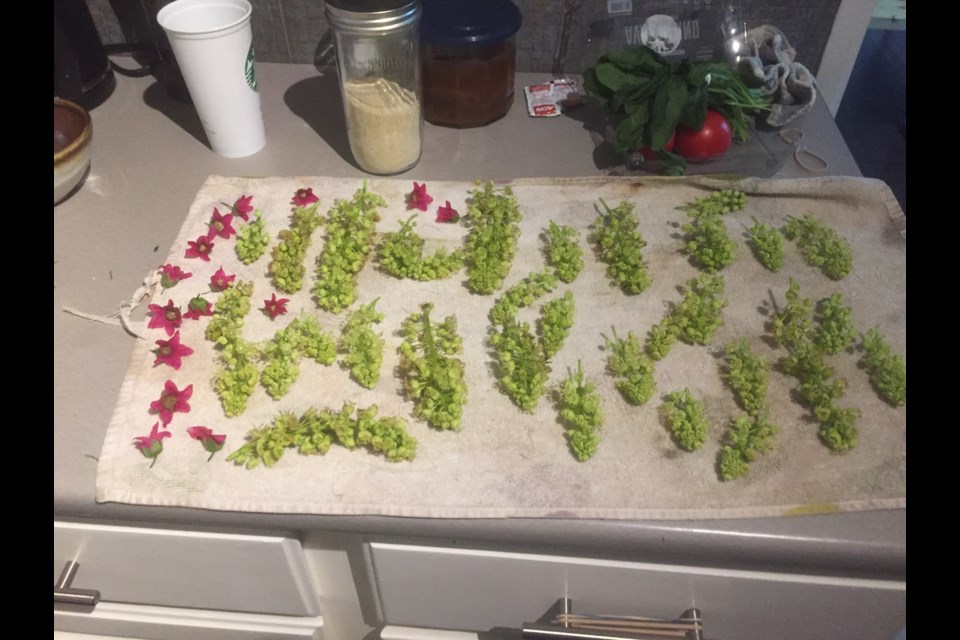What do you do with Howe Sound's first herring roe harvest in 100 years?
That was up to the creativity and cooking skills of young students from Cultural Journeys in Squamish.
Some got their first taste of herring roe as they pulled their harvest out of the Sound on March 15. Days before, they had placed branches of hemlock and cedar tied to rocks to mimic seagrass and kelp beds.
Weighed down with thousands of eggs, student Talise Chapelle said she was surprised how hard it was to hold the branches for even the amount of time it takes to snap a photo.
"I didn't expect there to be so many eggs in a few days," Kiya August said of the harvest.
Right away, students sampled the goods.
"It was like popping a ball of water into your mouth that's very salty," Lindsey Jones said.
Zaiden Freitag said the raw roe was "super weird. I wasn't going to eat it, but when I put it in my hands, it felt so squishy. I bit it, and it just squirted, but was kind of crunchy and salty. It was really weird."
The teachers went door-to-door in the community to distribute some of the raw roe. Like the students, for some of the elders, it was the first time they'd held herring roe since they were children.
"No one thought it would work," said teacher Matthew Van Oostdam of the harvest. "It was pretty surprising for most people to see it happen and see the kids taking part in it."
Over the spring break, the rest — thousands of herring eggs — hung in the empty classrooms. (Van Oostdam would hear from other teachers about the overwhelming smell they returned to in the school after the break.)
Once dried, students took the roe, grinding it into a fine powder with a mortar and pestle, then filtering it to separate twigs and pieces of hemlock.
Finally, it was time for the students to cook their first herring roe dishes. Separated into three teams, the students were judged for three components: presentation, co-operation and taste, explained Bodhi Griffin, one of the student judges.
Each team was given ingredients, gluten-free breadcrumbs, regular breadcrumbs or tempura, and all had eggs and oil. It was up to the students to gather the rest from the schoolyard's plants. All used maple blossoms, while some added dandelions, lemongrass, kale and salmonberries. One team added a bed of tulip pedals for presentation.
"It was super yummy," Lowell Degroot said.
"It was a lot of fun to be cooking. It was fun to get to use the herring roe, because we all worked hard to get it," Morgyn Danielson added.
More than a month and a half after the historic harvest, the school's deep freezer is still full of raw roe that hasn't been dried yet. What's left will be processed by the students, and cooked for potlatches and pit cooks as batter or garnish.
"Now that we know how to do it, maybe we can teach other people," Chapelle said.
Van Oostdam said the class will also learn to smoke it. But they'll have to wait for nice weather, since — the memory of the smell still lingering — they can't dry it out in the classrooms again.







